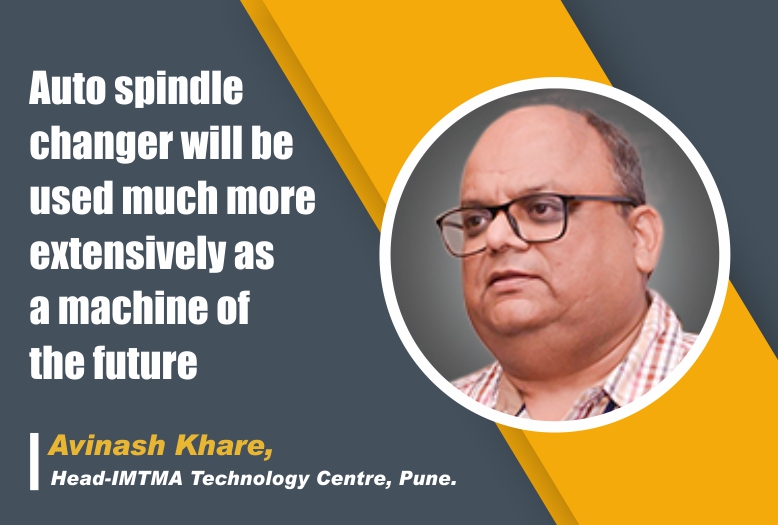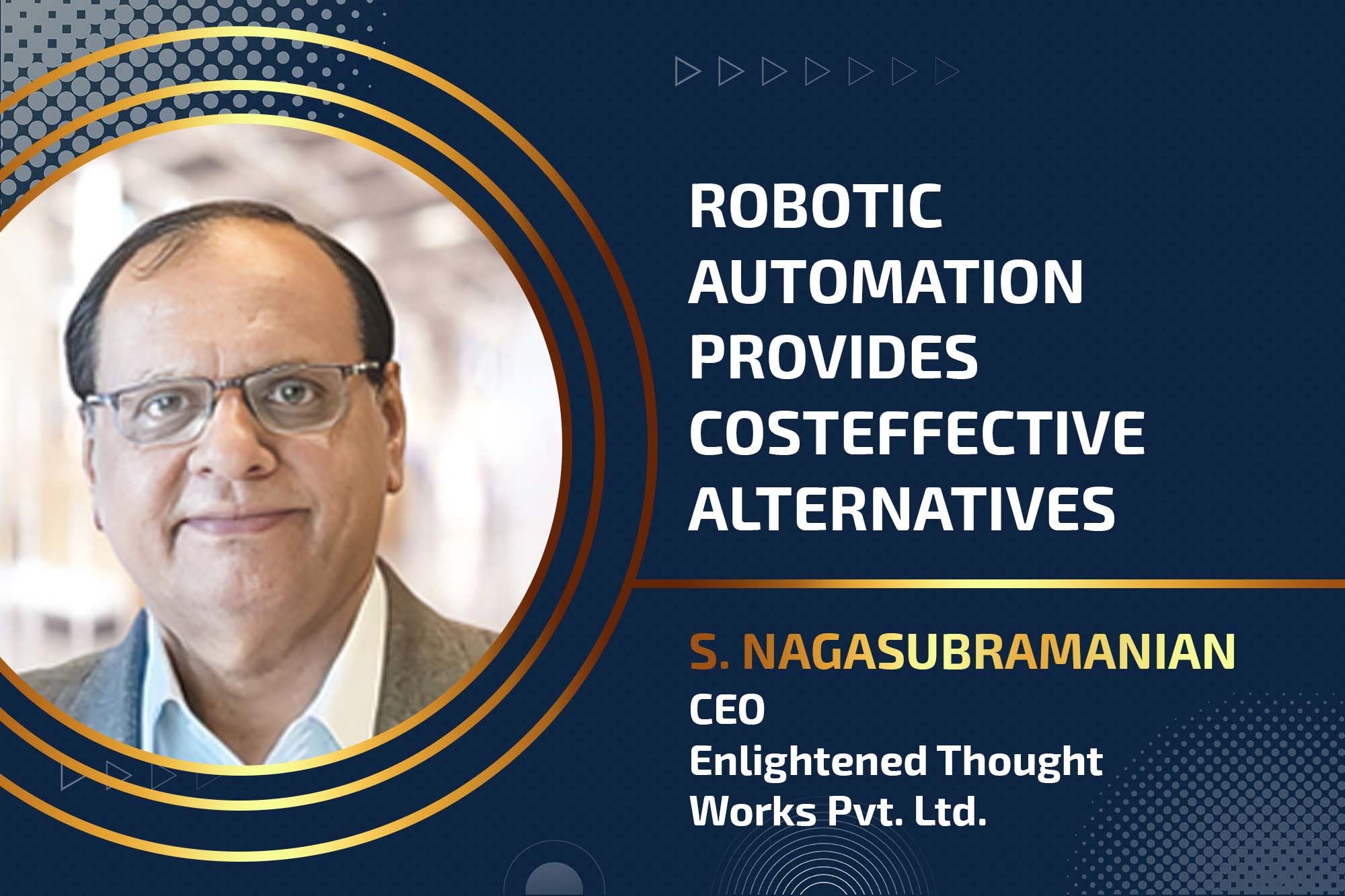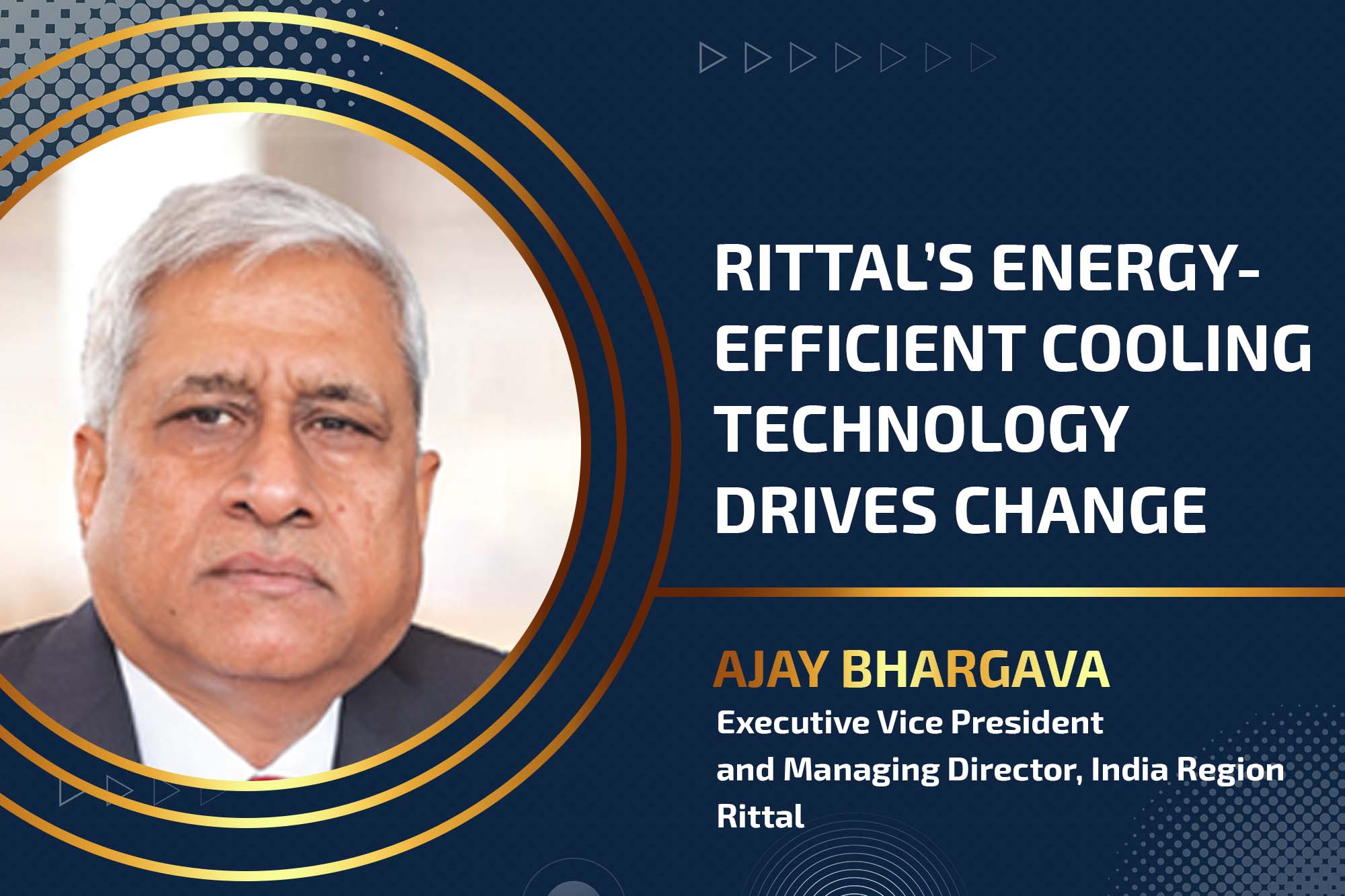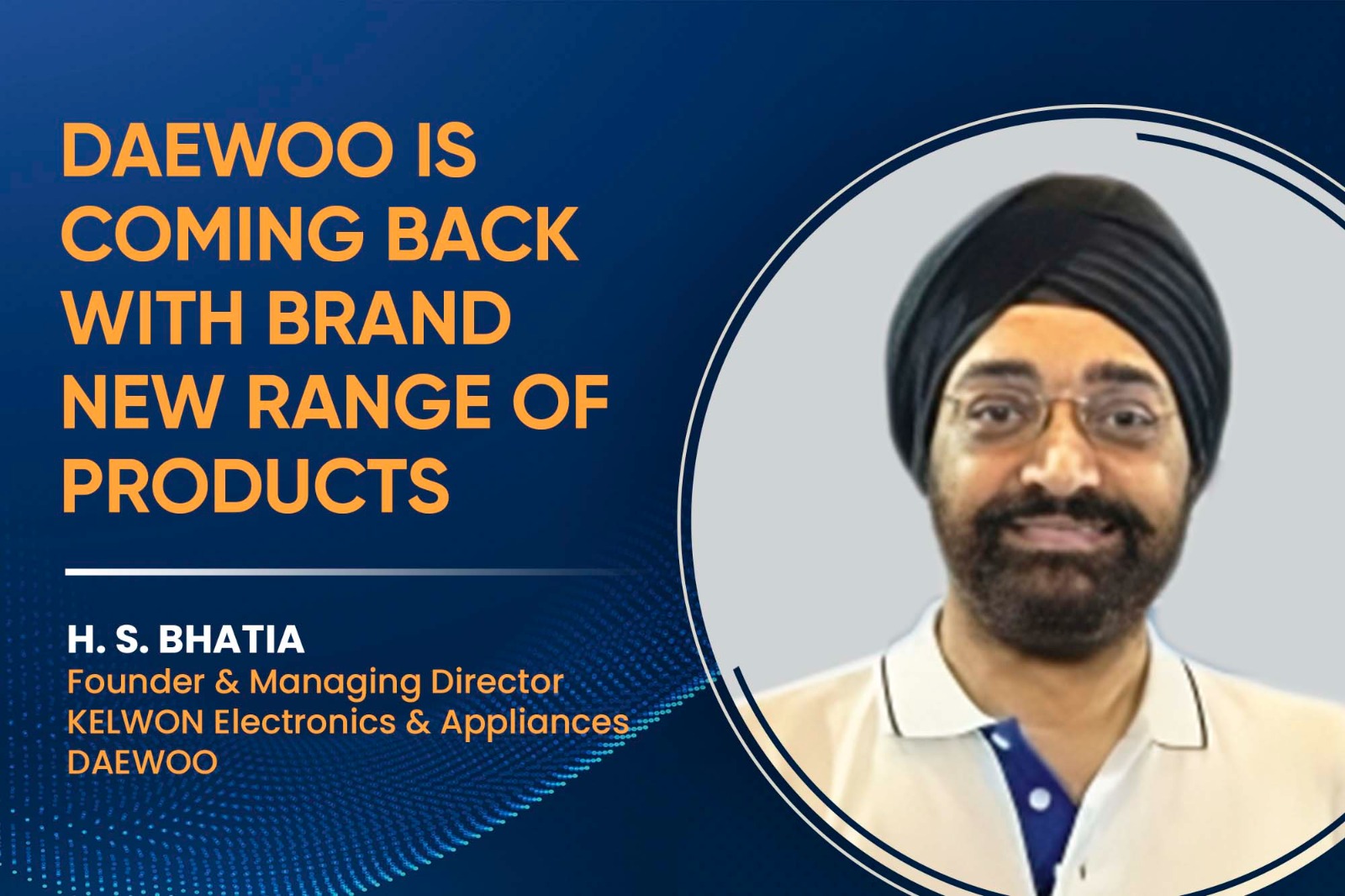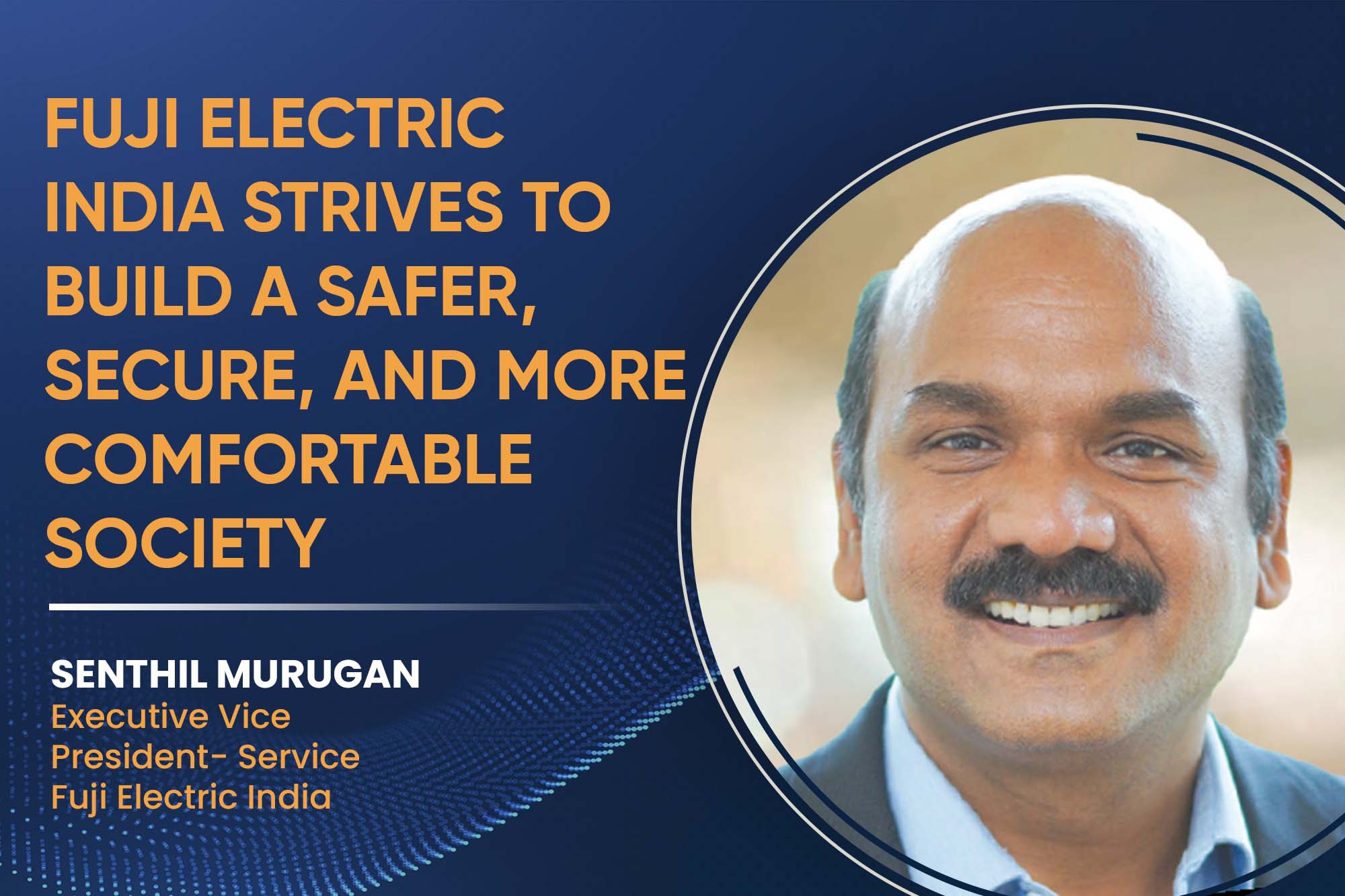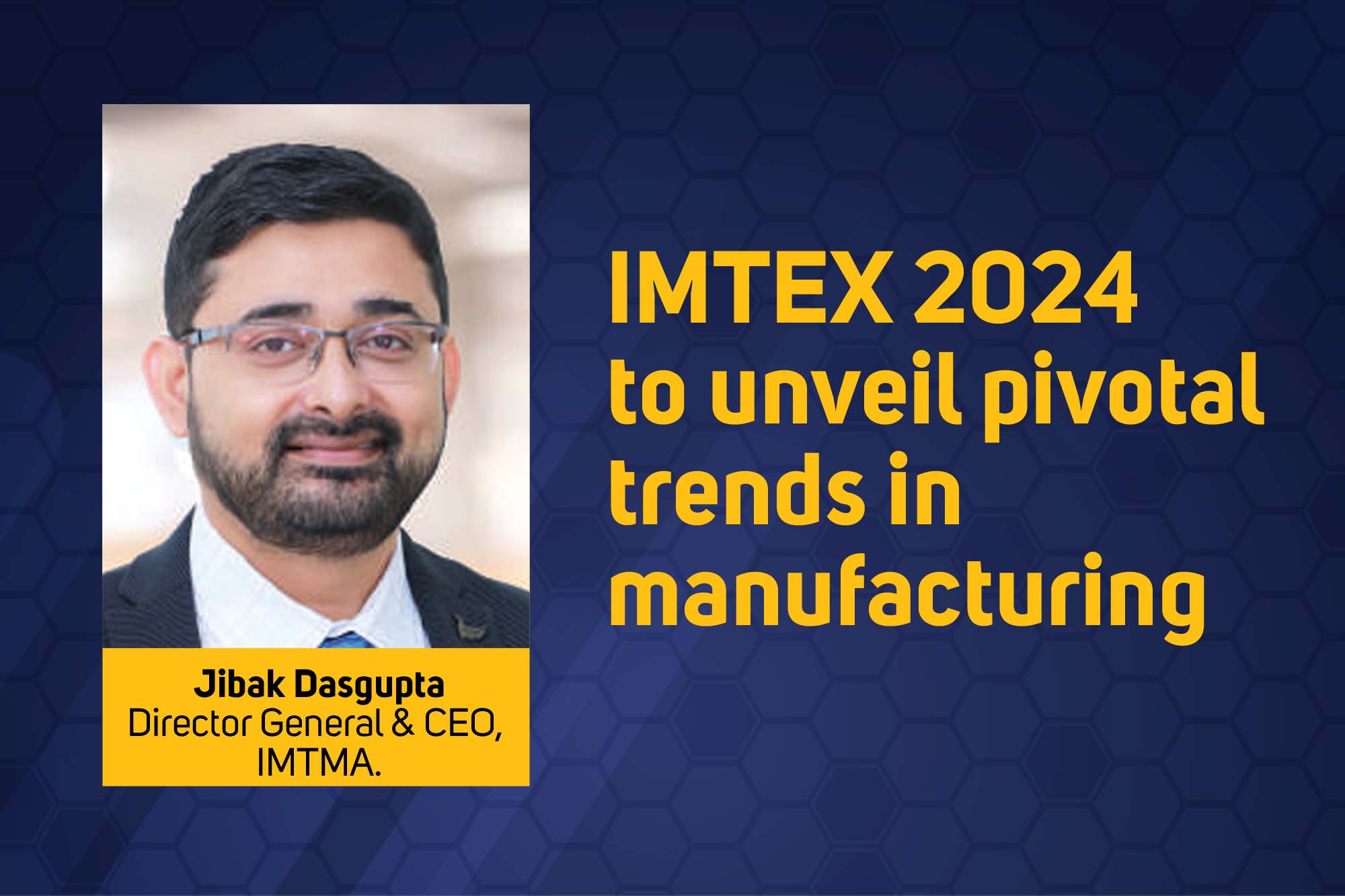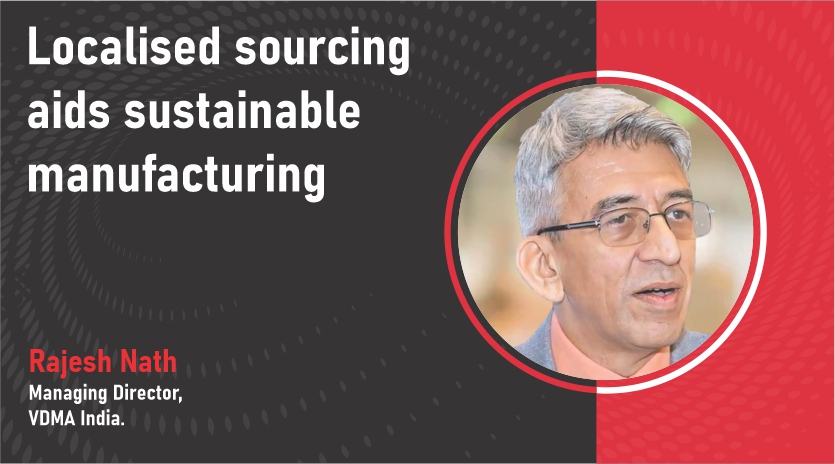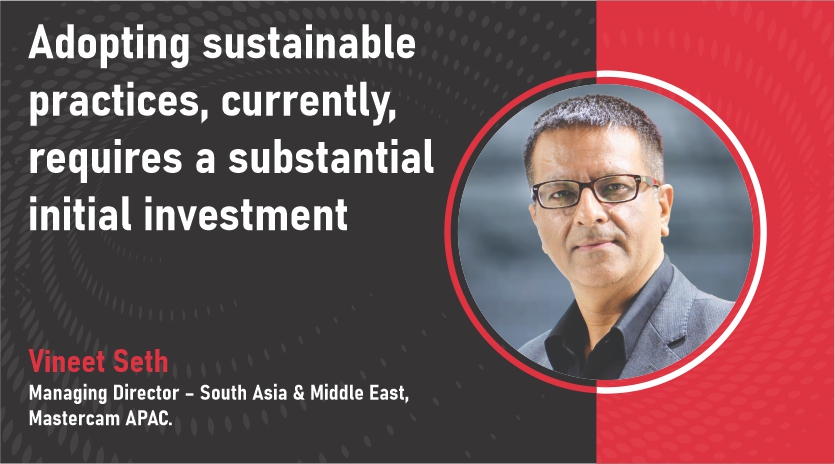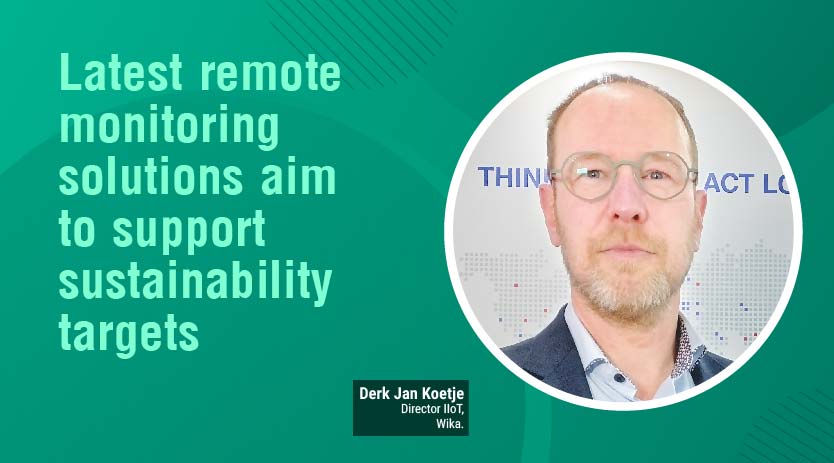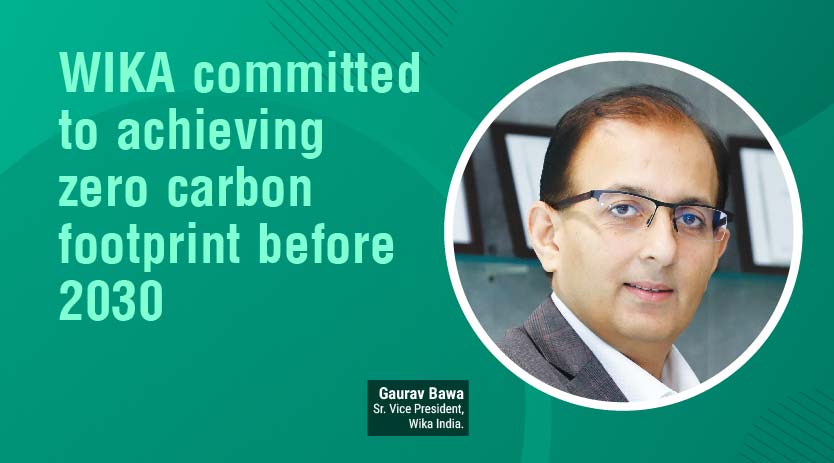Auto spindle changer will be used much more extensively as a machine of the future
By OEM Update Editorial January 3, 2022 4:47 pm IST
Onus of generating process data for effecting learning and active control shall lie with the machine tool.
Key features of machine tools of the future Of industry 4.0 also is there but the focus is machine tools of the future. It is worthy to note key fetures and the key evolutions which will happen in the machine tool.
First point is flexibility of CNC in a mass production SPM (Special Purpose Machines). There are two words in machine tools SPM and GPM. Now CNC happens to be in GPM. So, we want the productivity and speed of SPM but we want flexibility of GPM. Second is the use of modular things, like cartridge spindles and changeover spindle heads, multiple spindle heads mean, our machine tool of the future may look like Ravana with 10 heads. So they can pick up the head they want now.
For identification of jobs and identification of operative and automated parameterisation by CNC and AI based automated dynamic response optimisation, we know of PID controllers and how they can play havoc with chatter marks and things like that when you do machining. So, it is a function of centre of gravity movement, it is a function of inertia and mass of job which is loaded on the table. So how does the machine adjust itself to have the best dynamic response? Lastly, how can CNC decide adaptively what kind of roughing strategy it should use, if you have to make a job out of solid blocks.
Process inspection based adaptive machining
The first point is that we want to have the productivity and cycle time of SPM but the flexibility of CNC machines now is what people were doing in SPM. So you have a multi spindle head, which is drilling let us say six holes or eight holes on PCD. And because the spindles are working in parallel, you are able to reduce the cycle time. Now you don’t need much of a CNC because the real machining is only happening up and down. So, this was the SPM era and now the thing insert, you want to have flexibility of a CNC you have to have something whereby you are able to do something like this.
So, you have multiple spindles, let us say two spindles, where with the CNC you are able to adjust their relative positioning. So, if you have a different job, you can adapt the head through CNC for the next job okay. So, basically, multi spindle SPMs give very high production volume, because your movement during cutting is very less and cycle time is low, but they have very rigid configuration and you have to throw away the head and have another head if you want to change it So, CNC controls in future would be used extensively for reconfiguring the multi-spindle head, the machine will still work in mass production as SPM with point to point control, but only when you do setup chain, the CNC features are used and it is not hard to imagine that you had let us say six holes on a PCD you could have six tiny servo motor and six slides disposed radially and whereby you are able to change the spacing between PCD the (pitch circle diameter). Now this kind of flexibility is going to come in the machine tool of the future where you have the flexibility of general purpose machine flexibility of CNC, but the productivity of SPM.
Now, the concept is you can have cartridge spindle, you can have eight or 10 spindles for different purposes even attachments, some can be horizontal, some can be vertical 90 degree 30 degree at different orientations.
So, you can have auto spindle changer going further, auto attachment changer, auto spindle changer, this is not the concept that is not known today. Obviously, it will be used much more extensively as a machine of the future.
Machine tool of the future
If you have RFID technology. You can have an RFID based ID card on operative as well as the job can carry an RFID sticker and RFID reader is there on the machine. So the machine knows what is the job that has come on the table, and who is the operator. So according to his or her authorisation, it can decide what it can do, what program it can run, what it cannot run, okay. So, it can select the program automatically, it can adjust the speed and parameters automatically. On higher side, the CNC could be talking to your production schedule, your Gantt chart, and sometimes people are reluctant to enter data, the machine itself will directly update the Gantt chart Okay, so that is the way of the future that’s how it’s going to be in the future.
AI based automated dynamic response optimisation and volumetric compensation for thermal behaviour.If in a CNC machine spindle you add; let us say a vibration sensor and you are measuring the spindle current sensing and temperature sensing. In addition, it is possible to have AI based learning and optimisation of value parameters for different classes of job. So a machine can learn over a period of time and it can decide the optimal setting for different kinds of jobs. And those settings it can automatically adjust. It can do that and what is the material of the job, what is the extent of material removal required etc. It can select the best program, best cutter, best speed and it can give you a vibration free cutting you can even have features like active vibration suppression active damping. So, if CNC knows its coordinate, it can directly learn what the compensation value is and it can dynamically apply those kinds of compensations. So, going further, that’s going to be the standard feature in the machine tool of the future.
Now, suppose for die and mould particularly for PTC you have to start from a solid force block, the biggest question is how do you do roughing because there is a villain of the piece which is called as air cutting. Now, if the CNC can automatically find out where it is they are air cutting, and it can truncate those programs and directly come from here to here, it will save some time and it will improve productivity for sure. Okay, now, this is going to be a standard feature. Of course, you can always do it through the CAD/ CAM route now, but it will get integrated in the CNC itself.
Quality assurance tool
Now in process gauging, going further, another feature is coming that you are measuring and automatically compensating. You are measuring and changing the strategy that is the third part and measuring and learning that is the fourth part you have to feed AI with a lot of data. Now, if you acquire a lot of data by way of measurement, you are able to have that much more intelligent algorithm. So, time versus vibration and not just vibration you can do spectral analysis of what frequency what amplitude for after and like transformation kind of a thing you can have the spectral analysis of vibration, you can also have the spindle current envelope. And you record it let’s say for 10 jobs 100 jobs then you know, what is the variability from job to job and then for subsequent job you use these signatures as templates and the machine can automatically validate whether the current job is going to come or there is some abnormality in the current job based on the vibration based on the current exceeding the envelope of signature right. So, this is a very powerful quality assurance tool, which will proactively assure that when something abnormal happens it will flag an abnormality and it will not mass produce the defect it will stop at the first occurrence of defect okay. So, that is going to improve the quality dramatically.
Compatibility between industry 4.0 and industry 5.0
Now, the last point of course is compatibility between industry 4.0 and industry 5.0 normally when we talk about 4.0 or 5.0, OEE talk of productivity, scheduling predictive maintenance, energy monitoring etc. But why are we not doing all these things when there was no sign of Industry 4.0, we were doing it two decades back also. So, what more we do now, apart from automating the dashboard fine, automation of the dashboard is happening. But what additional value you are getting through industry for Industry 5.0 applications now I4.0; how to do something that we were not able to do before. If you add all and integrate with Industry 4.0 you will have the power to do a lot more than what you were ever able to do in the past and that is the real benefit. OEE and Industry 4.0 is becoming convenient, automated etc. So, a machine tool is no longer a standalone building block of a production system
Industry 5.0 machines
Going further, it should be integrated to the production system with adaptability with automation with live data generation for AI to feed and for Industry 5.0 machines have to work together with human operators because there has to be human touch in everything. So, presently the operator has to learn how to operate the machine. Going further, the machine will have to learn what the operator wants to do. So, a machine has to do speech recognition, a gesture recognition machine has to work like a buddy with the operator and it has to make out the newer nuances or in a personalised manner in a customised manner.
Machines as co-worker
So, the machine has to become like a co-worker who is intelligent and who’s adaptive and who’s sensitive and sensible. So, machines going further are becoming mechanically simpler but complex through electronics and software, they will no longer be standalone or modular entities, where the production system or operator must adapt to make it work.
Machine tools will have to adapt to the production system or operative in the interest of optimisation. The onus of generating process data for effecting learning and active control shall lie with the machine tool. And a machine tool has to move away from being done by the executor of a script written by somebody to a friendly process, genetic adaptively, automated, flexible co-worker, that sharp observation, which can help evolving the script that it would execute in future.
Cookie Consent
We use cookies to personalize your experience. By continuing to visit this website you agree to our Terms & Conditions, Privacy Policy and Cookie Policy.




